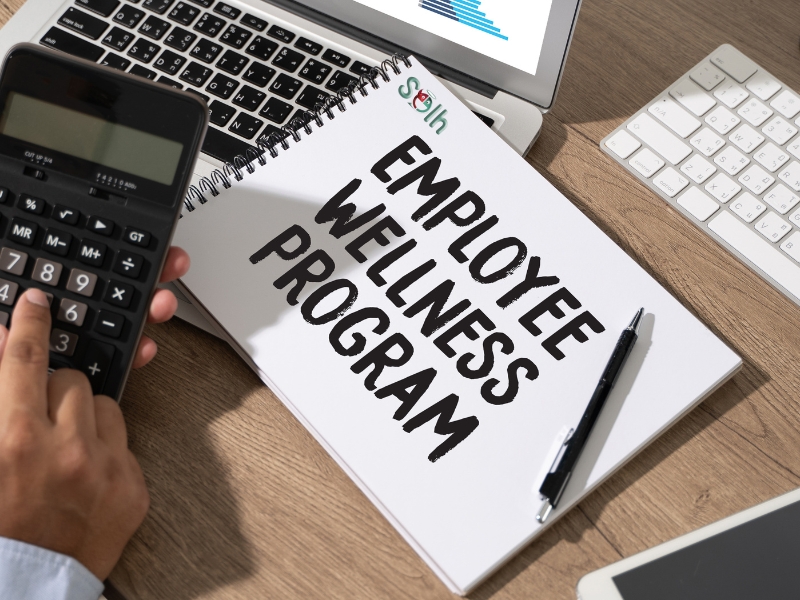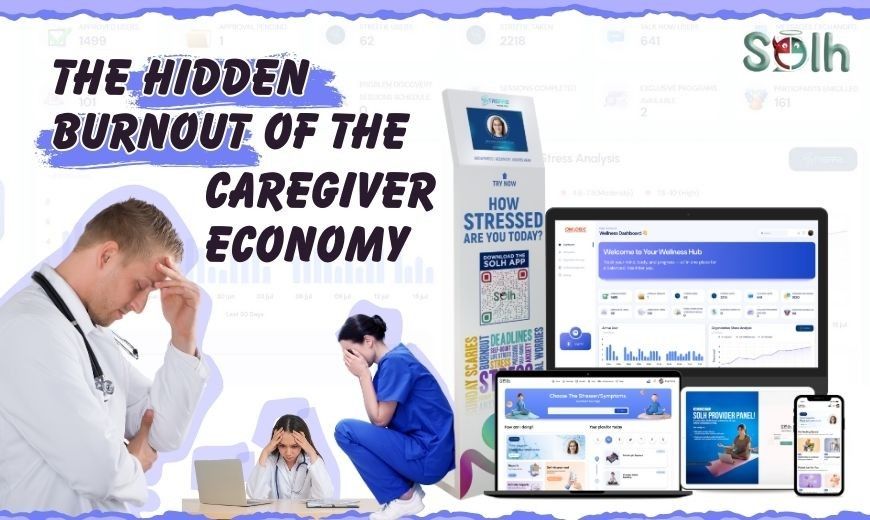The hard truth? Most employee wellness programs fail. Not because companies don't care. Not because HR isn’t trying. But the current model doesn’t address the core problem.
Walk into any modern office today and you’ll hear the buzzwords: “employee wellbeing,” “mental health support,” “work-life balance.” HR leaders proudly present shiny wellness dashboards, while corporate brochures list yoga sessions, Friday happy hours, and mental health webinars.
And yet, burnout is at an all-time high. Resignations are rising. Absenteeism is costing organizations millions. Clearly, something’s broken.
At Solh, we’ve spent years understanding the problem with employee wellness programs—and more importantly, what actually works.
5 Reasons Why Employee Wellness Programs Fail
1. They Treat Corporate Wellness Like a One-Off Event.
A quarterly webinar on " managing workplace stress "? A subscription to a meditation app? These are band-aids, not solutions.
Mental wellness is not an intervention of the week. Stress accumulates daily; resilience must be developed daily. When initiatives fail to establish sustained support, workers are left behind when actual issues arise.
2. They Target Surface-Only Activities, Not Underlying Causes.
Most employee wellness programs fail because they provide yoga, Zumba, or breathing classes. Good for temporary relief, but almost never effective in helping employees manage:
- Toxic management
- Unrealistic workloads
- Career anxieties
- Relationship issues
- Financial stress
If your program isn't touching on these root causes, it's missing the point.
3. They Rely on Self-Reporting.
"Check-ins on wellness" tend to require employees to report personal challenges. But employees won't open up. Will HR use it against them? Will it impact promotions?
Classic models tend to overlook this very human phobia. Therefore, authentic problems go unnoticed, too late.
4. They Overlook Personalization.
Each employee copes with stress uniquely. For one, it's work deadlines. For another, it's caregiving. A one-size-fits-all wellness model won't work in a diverse workforce.
5. They Fail to Become Part of Daily Work Life.
If it takes longer, additional apps, or filling out forms to access wellness support, employees just won't do it. Corporate Wellness Programs that are resident within the workflow are adopted at much, much higher rates.
What Actually Works: The Solh Model
Corporate Wellness is not a perk—it's infrastructure, in our opinion, at Solh.
That’s exactly why employee wellness programs fail when treated as optional add-ons instead of being built into the company’s core culture.
1. Personalized Stress Mapping
We start with discovering each employee's individual stressors. Burnout? Money concerns? Relationship issues? Our easy onboarding reveals what's actually holding employees back.
2. Ongoing Support, Not Crisis Management
Employees don't require assistance only when they're breaking down. They need daily support to remain strong:
Daily guided activities
- Chat-based support
- Micro-break practices
- Self-assessments
- 24x7 chat with psychologists (Talk Now)
3. Technology-Enabled, Private, and Scalable
Employee wellness programs can use tools like Streffie (our AI stress monitor) privately without judgment. Our system monitors micro-stressors organization-wide, allowing HR to solve systemic issues without invading individual privacy.
4. Problem Discovery: Uncovering Concealed Triggers
Our 10-minute Problem Discovery sessions enable employees to discover the real cause of their anxiety or burnout. This enables quicker, more precise intervention.
5. Stress Insights for the Entire Organization
Solh gives HR and leadership anonymized, aggregate data, identifying which departments, teams, or periods have increased stress trends. Leadership receives real, actionable insight, while employee privacy is maintained.
The Future of Wellness Is Human + AI
The future generation of Corporate wellness initiatives won't replace human beings. They will augment humans.
- AI to recognize patterns.
- Counselors are to create depth.
- Micro-interventions to develop resilience on a daily basis.
- Leadership that gets wellness as a strategic imperative.
We're not creating a wellness app at Solh. We're creating a culture of psychological safety, over time.
Conclusion: You Don't Need Another Wellness Program
You need a partner who understands your people, your data, and your business outcomes. Employee wellness programs fail because of their old model. HR leaders who evolve will create companies where people thrive, not just survive.
If you’re ready to see how Solh can transform your personalized wellness program , let’s talk.
Let’s Connect!



